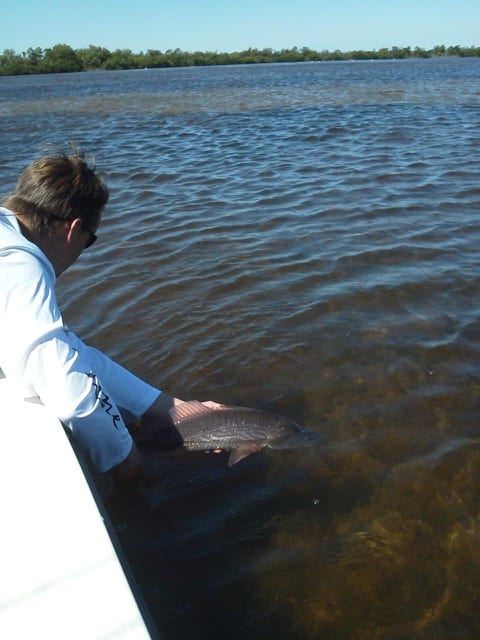by Capt. Mike Manis
Even though it’s most likely we’ll see a couple cold fronts in February, we’re moving into what should be winter’s last blast. As with last month, negative morning tides dominate much of the calendar providing opportunities to fish the incoming as the sun warms the flats. More than likely, I’ll target redfish and spotted sea trout and work the best available turtle grass flats. If the wind kicks up, I’ll stick close to adjacent lee shorelines. As with last month, low tides may restrict access. As a result, I’ll try and get out early while the tide is still running out. This allows me to get on the flat I’d like, without damaging the sea grass. The only downside is that you’re there to stay until tide comes up. On the bright side, you might find yourself nearly alone on the flat, as anglers that didn’t think ahead will be locked out. This advantage will go away soon when winter tides subside.

For anglers that can’t access these areas, there are opportunities. Off the intracoastal on the deeper grass flats spotted sea trout will be active. Two to four feet is best. Pompano will be abundant on outside bar systems. I’ve always found the best bite on hard bottom, like that off Cape Haze Point. Spanish mackerel and bluefish will be chasing bait around channel markers and artificial reef systems. Sheepshead are just about everywhere. In particular, piers, docks, bridges, and artificial reefs. I’m even seeing them all over the flats.
Lastly, there are always the canal system docks when you need to get out and the cold wind and low water are limiting your options. Between Boca Grande, Port Charlotte and Punta Gorda, there’s lots of ground to cover. I’m not a big fan of fishing in someone’s back yard; but if you have company in town, it may be your only shot. Redfish, snook, and, sheepshead move into these systems with the perimeter canals fishing best. With this being said, please be courteous and careful casting up under these platforms. Until next month, good tides.

